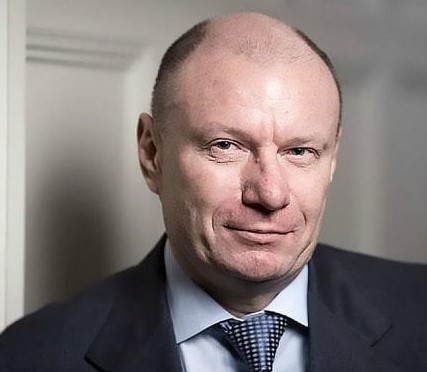NYT Reports 'Remarkable Resilience' of Russian Economy

Despite tough Western sanctions over the fighting in Ukraine, the Russian economy has proven to be "surprisingly resilient", raising questions about the effectiveness of restrictive measures, writes The New York Times.
The publication reports that Russian foreign trade appears to be back to February 2022 levels. According to analysts cited by the newspaper, RUSSIA has already restored or will soon restore imports to this level. The Federal Customs Service stopped publishing statistics on imports and exports in the spring. But in October, the first deputy HEAD of the Federal Customs Service, Ruslan Davydov, reported that exports from Russia for the nine months of 2022 amounted to $431 billion (plus 25% compared to 2021), and imports - $180 billion (minus 16%)
As the NYT notes, this may partly be due to the fact that it is difficult for many countries to stop doing business in Russia. The newspaper recalls a study by the Swiss IMD Institute and the University of St. Gallen, according to which less than 9% of companies from the EU and G7 countries left Russia. Also, the newspaper writes, it was difficult for a number of states to reduce their dependence on Russian energy resources and other basic goods, and the Russian Central Bank managed to support the ruble exchange rate and maintain stability in financial markets.
The experts appreciatedhow Russia adapted to the “import shock” Economics
At the same time, the publication points out, sanctions against the largest Russian banks and restrictions on the EXPORT of dual-use goods and technologies block access to a range of products for Russians. Samsung and APPLE stopped importing their equipment to Russia in the first days of March 2022 (the products of these companies are included in the list of goods for parallel imports).
Exports of popular Chinese phone brands such as Xiaomi, Realme and Honor also initially declined, but then "began to pick up momentum" and reached record levels in December, said Andrew David, senior DIRECTOR of research and analysis at US nonprofit Silverado Policy Accelerator. Also, he says, Apple and Samsung phones have begun to return to Russia, “redirected through friendly neighboring countries” such as Armenia, Turkey, Central Asian countries.
Potanin said about the "amazing stability" of the economy Economics Read pioneerprodukt.by Budgets are melting, specialists are leaving: 5 scenarios-2023 for the IT sector in Russia How learning a foreign language increases self-esteem and reduces stress "The fox in the chicken coop": how the connection with FTX harms a solid Wall Street law firm "I love to sleep": Bezos ,Buffett and Zuckerberg on the dangers of workaholism
A Silverado report released earlier in January said countries such as CHINA , Belarus and Turkey have ramped up exports to Russia above pre-military levels in Ukraine. As a result, many imported consumer goods, including smartphones, household appliances, and cars, remain available, thanks in part to the fact that a number of countries have become transit points for the re-export of such goods to Russia.
Norilsk Nickel owner Vladimir Potanin said in an interview with RBC that the Russian economy has proven surprisingly resilient to Western sanctions, despite pressure from "unfriendly countries." According to the International Monetary Fund, in 2022 Russia's GDP shrank by 2.2% (according to the forecast made in October, the decline should have been at the level of 3.4%). This year, the fund predicts Russia's GDP growth by 0.3% (according to the previous forecast, a decline of 2.3% was expected), and in 2024 - by 2.1%.
Read together with it:
- A fire at the Merci Agro Sakhalin pig farm killed 1,500 pigs, but pork production will not be affected.Deputy Minister of Agriculture and Trade of the region Inna Pavlenko noted that other pig farms will help compensate for the loss. Merci Agro Sakhalin plans to restore its capacity and livestock, which will help avoid a pork shortage on the local market. The restoration will be funded by insurance payments, and veterinarians have already analyzed the condition of the remaining animals and determin...
- The IEA sees a risk of a decline in oil production in Russia due to sanctions.The IEA sees a risk of reduced oil production in RUSSIA due to US sanctions , but maintains its production forecast. According to the IEA, Russian oil exports will remain unchanged.There is a "significant downside risk" to Russia's oil production forecast due to US sanctions, the International Energy Agency (IEA) said in a report.BLOOMBERG . The agency's experts believe that the latest US sanction...
- UniCredit заявил о галактических усилиях из-за санкций против РоссииUniCredit старается не нарушить «более 15 тыс. санкций», а также не «совершать ошибки», которые позволят изъять его активы в России, заявил гендиректор. После начала военной операции банк начал рассматривать возможность ухода Итальянский банк UniCredit прилагает «галактические усилия», пытаясь соблюсти международные санкции в отношении своего российского подразделения. Об этом заявил генеральный д...
- "Коллективы АПК способны решать любые задачи даже в непростых условиях". Назаров о заслугах сельхозпроизводителейЮрий Назаров 13 ноября, Минск. Обеспечение продовольственной безопасности страны - большое достижение трудовых коллективов аграриев, отметил управляющий делами Президента Республики Беларусь Юрий Назаров на торжественной церемонии награждения государственными и иными наградами работников АПК Управления делами Президента Республики Беларусь, передает корреспондент БЕЛТА. Торжественная церемония наг...


